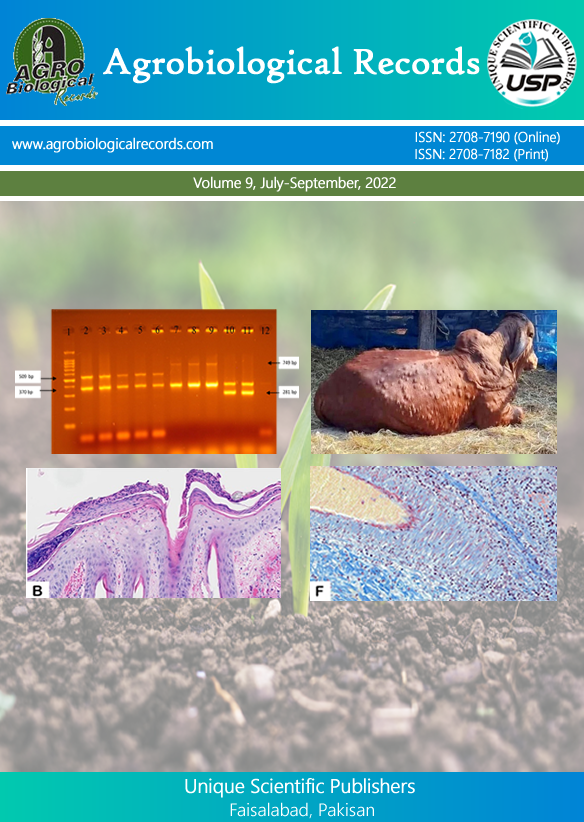
Tesfa Betelhem1, Abera Leliso Shubisa2,* and Fufa Dawo Bari
1Addis Ababa University, College of Veterinary Medicine and Agriculture, Bishoftu, Ethiopia; 2Animal Health Institute, Sebeta, Ethiopia
*Corresponding author: shubisaabera12@gmail.com
A cross-sectional study was carried out from January 2021 to August 2021 on lactating dairy cows suffering from mastitis cases to isolate and identify Staphylococcus aureus and to assess their antimicrobial susceptibility patterns. The lactating cows (n=300) from Sululta and Holleta towns, Oromia Special Zones, Oromia National Regional State, Ethiopia, were enrolled in the study. All cows were screened for mastitis using California Mastitis Test (CMT). Two-thirds of cows (66.7%) had mastitis, of which 185 (61.7%) and 15 (5%) showed subclinical and clinical mastitis, respectively. CMT positive milk samples were collected from CMT positive dairy cows in both towns and examined using standard microbiological techniques, including culture, colony characterization, primary and secondary biochemical tests, and species-level identification of Staphylococcus aureus. The BiOLOG identification system conducted the species-level identification for Staphylococcus aureus. Overall, 15 samples were positive for Staphylococcus aureus by BiOLOG. Finally, the antimicrobial profiles of the 15 Staphylococcus aureus confirmed isolates were assessed using 10 different antimicrobials. Out of these, 93.3% of isolates were highly resistant to Penicillin G, 80% of isolates were equally resistant to Cefoxitin and Oxacillin, and 73.3 and 60% of isolates were found to be resistant to Amoxicillin and Tetracycline, respectively. However, all 15 isolates of Staphylococcus aureus were highly susceptible (100%) to five antimicrobials, namely Ciprofloxacin, Chloramphenicol, Sulphamethoxazole+Trimethoprim, Erythromycin, and Gentamicin. In conclusion, this study determined the importance of Staphylococcus aureus as one of the mastitis-causing bacteria of the dairy industry and investigated its antimicrobial resistance pattern. Therefore, the existence of Staphylococcus aureus in raw milk imposes a great risk to public health. Should awareness-raising training be arranged for dairy farmers and field veterinarians to use the antimicrobial agents against susceptible Staphylococcus aureus. Implementation of appropriate biosecurity measures and further research are needed to investigate why certain Staphylococcus aureus strains developed resistance to antimicrobial agents.